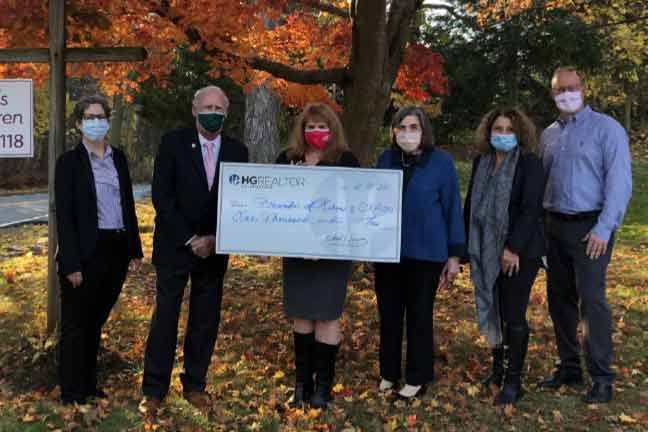 As temperatures cool down, so will business at restaurants, given the state”™s mandates for indoor dining.
As temperatures cool down, so will business at restaurants, given the state”™s mandates for indoor dining.
That was the unfortunate recurring theme at a virtual roundtable hosted by U.S. Sen. Chris Murphy on Nov. 20, at which Dan Meiser of Mystic-based 85th Day Food Community explained the dilemma many restaurateurs are facing.
“Does it make sense to keep bleeding out?” he asked. “Or do we close now, hunker down and try to conserve cash in order to reopen in the spring? There”™s no good option right now.”
As Covid-19 made its impact felt in the spring, Gov. Ned Lamont ordered all eating establishments to close their indoor operations, leaving them to rely instead on takeout and delivery services. In May, the state allowed restaurants to create outdoor dining areas; the following month, they could operate indoors at 50% capacity, under a litany of conditions.
In October that capacity was increased to 75%, but was quickly scaled back to 50% when the second Covid wave hit the state. Lamont has said he would like to maintain the 50% level through at least the winter months, but public reticence about eating indoors ”“ and, of course, whether the number of coronavirus cases continues to spike upward ”“ may ultimately not make much of a difference.
As of Nov. 19, the total of laboratory-confirmed and probable Covid-19 cases reported among Connecticut residents was 101,469, with 848 patients hospitalized with laboratory-confirmed Covid-19 and 4,828 Covid-associated deaths. The daily positivity rate stood at 6.63%, compared with 6.37% one week earlier.
While increases in outdoor and indoor dining had made immediate differences in most restaurants”™ bottom lines over the summer, “The cash dries up extremely quickly,” said Matt Storch, chef and owner of South Norwalk”™s Match restaurant.
Paying bills now that had languished during the spring, spending $2,000 on air filters and plexiglass dividers for tables, and other pandemic-associated expenses are a further drain, Storch said. “There”™s no way to recoup that cash. We”™re reinventing our restaurants basically on a monthly basis, and that doesn”™t work.”
Relying on third-party delivery operations like Uber Eats, GrubHub and DoorDash further cuts into profits, Meiser said, as they routinely charge 20-30% of a given bill for their services. “You start giving away up to 30% of your revenue, the math starts not to make sense,” he said.
According to the Connecticut Restaurant Association, over 600 restaurants in the state have closed either permanently or temporarily due to the health crisis. A recent National Bureau of Economic Research report found that as many as 85% of the nation”™s independent restaurants may survive if the pandemic continues.
Relief on the way?
Storch said the media has played its part in the crisis.
“I can say Tuesday (Nov. 17), pretty much it dried up,” he said of business. “The New York Times, the governors, you name it, everybody said, ”˜Restaurants are now becoming dangerous”™ and that is a giant issue. They”™re not specifically saying that, but the undertone is ugly.”
Murphy said the challenge was to “not overhype” the danger of eating in restaurants while communicating the customer and worker safety measures each establishment has instituted. The paradox is trying to provide “some level of consistency and certainty in the midst of a virus that provides no consistency and certainty,” he said.
“We”™ve got to turn up the heat on our colleagues in Congress” to pass another Covid-19 relief bill, the senator said.
Help could already be on the way. On Oct. 1, the U.S. House of Representatives passed the Real Economic Support That Acknowledges Unique Restaurant Assistance Needed to Survive (RESTAURANTS) Act, a $120 billion relief bill introduced by U.S. Rep. Earl Blumenauer (D-Oregon). It represents the first time that either chamber of Congress has passed targeted relief for the nation”™s 500,000 independent restaurants ”“ which account for three-quarters of the restaurants and bars in the United States ”“ and their 11 million workers.
It also gives priority to minority- and women-owned and operated establishments. Unlike previous federal relief packages, the aid would only be available to food service or drinking establishments with fewer than 20 locations that are not publicly traded.
“Restaurants are not only where people come together, but they also provide a disproportionate avenue of economic success for minorities, immigrants and women,” Blumenauer commented. “We”™re doing everything we can to ensure that the Senate joins us in quickly approving this critical relief to local, independent restaurants and their workers.”
A similar $120 billion bill also named the RESTAURANTS Act has been introduced in the U.S. Senate, although it includes chains like McDonald”™s and Wendy”™s as its potential beneficiaries.
Whether either bill is passed during the current lame-duck session remains a very open question ”“ something that the restaurants can ill afford.
“The cavalry”™s got to show up. Whether that”™s in the form of state aid or an additional federal package, something has got to happen, Meiser said.





















